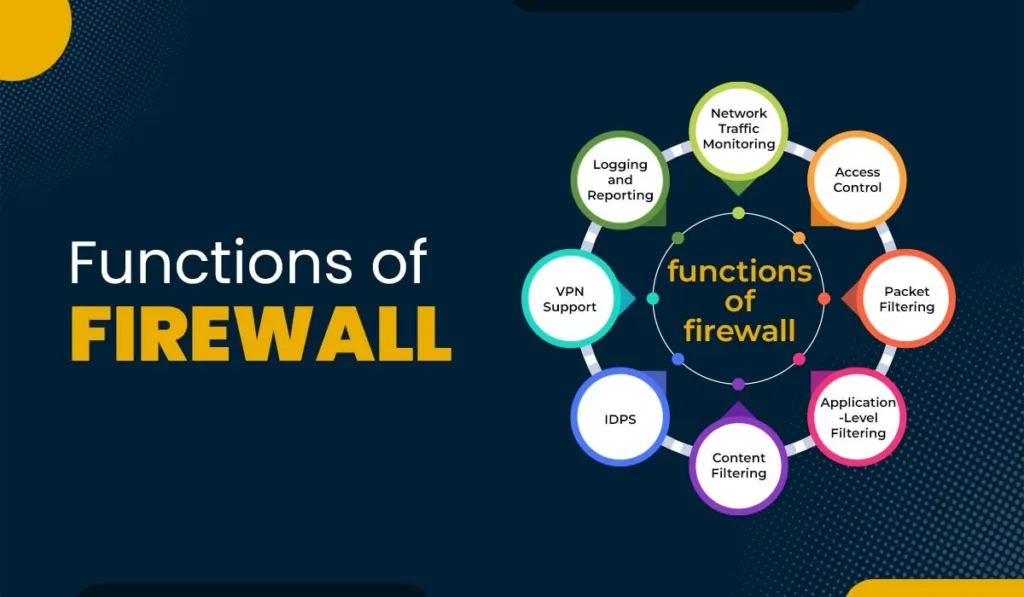
In the third quarter of 2022 alone, nearly 15 million data breaches were reported. With cybercrime on the rise, safeguarding digital data and the role of firewalls has become a top priority for businesses of all sizes.
One effective way to protect your network and sensitive information from unauthorized access is by implementing robust security measures—and a firewall is a key tool in that defense. It helps reduce the risk of breaches and keep your systems secure.
Your IT support team can help set up a firewall tailored to your organization’s specific needs. In this article, we’ll break down what a firewall is, how it works to shield your network, and why it’s a smart investment for every business. Keep reading to learn more about the role of Firewalls.
What Firewalls Do?
Think of a firewall as a security guard stationed at your company’s entrance, keeping intruders out. It checks and verifies the identity of everyone trying to get in—just like that, a firewall screens digital traffic before granting access to your network.
It acts as a barrier between your internal systems and the outside world, allowing safe communication among authorized users while blocking unwanted outsiders. On a personal level, a firewall shields you from hackers who may try to run malicious programs on your device.
According to Business Wire, the global firewall market is projected to grow by $304 billion by 2026, driven by the rising demand for stronger network security. Let’s look at a few key ways firewalls help protect your data.
6 Ways Firewalls Safeguard Your Information
1. Defending Against Hackers
Breaking into a network that’s encrypted and uses multi-factor authentication is challenging—even for skilled hackers. That’s why many attackers target employees, tricking them into unknowingly granting access. While cybersecurity training can help reduce the risk, it’s not foolproof.
A firewall monitors incoming traffic, flags suspicious activity, and warns you about potential threats—such as downloading unknown software or clicking unsafe links. Depending on your security needs, you can choose a standalone firewall or combine different types for maximum protection.
2. Blocking Unapproved Websites
Visiting unsecured websites can expose your company’s network to serious risks. This is why businesses train their employees to be careful when downloading anything from sites that aren’t approved, especially suspicious shopping portals or platforms that distribute pirated material.
A firewall uses a built-in set of rules to decide whether to allow or block access to third-party applications. In short, it works as a filter to separate safe traffic from unsafe traffic. These rules are defined based on details like the source and destination of data packets, automatically blocking sites that appear dangerous or untrustworthy.
By doing so, it keeps your team away from websites that may contain malicious software capable of giving hackers easy access to your systems. This adds another layer of security beyond employee awareness and training.
3. Monitoring Incoming and Outgoing Traffic
A firewall creates a clear boundary between your private network and external networks. It examines every data packet entering or leaving your network, comparing it against preconfigured rules before deciding whether to allow it through.
Once the inspection is complete, the firewall determines whether the content is safe or harmful. Based on that, it either blocks the connection or grants access. These rule sets are tailored to each network’s requirements, and the firewall evaluates details such as the packet’s source, destination, and content.
Firewalls can also be set up to alert you when unusual activity is detected—such as a suspicious website sending a file, link, or other type of content. If such alerts happen frequently, it’s often a sign that someone is trying to break into your network, prompting you to increase your security measures.
4. Limiting Bandwidth Usage
Firewalls can be configured to control how much bandwidth specific applications or online services consume. For instance, a business might restrict the amount of bandwidth available for video streaming or similar high-traffic activities on its private network.
These limits can be set according to the types of traffic you want to prioritize and the level of access you want to permit for each.
5. Protection Against Network Crashes
Apart from stealing confidential data, one of the most damaging things an attacker can do is bring down your entire network. If your systems are unprotected and a hacker gains access, they can effectively shut everything down.
For an established business, the recovery process can be lengthy—requiring significant time to restore lost data or get the website back online. On top of that, it means wasting resources on recovery efforts that could have been avoided with a properly configured firewall.
6. VPN Support
When installed on a VPN server, a firewall ensures that only VPN-specific data packets are allowed to pass in or out of the network. This setup prevents unauthorized users from gaining access to the VPN.
Firewall rules are customized according to the organization’s needs and can be positioned at either the front or back of the server. This allows it to filter incoming traffic effectively, permitting only those websites or applications that meet its predefined safety criteria.
How to Use a Firewall?
Many businesses choose to outsource their network security and technical operations to trusted IT service providers. These experts deploy strong security measures—such as firewalls—to safeguard the company’s network, protect employees, and keep client data secure.
To get the best protection, a firewall must be installed correctly and maintained regularly. Here are a few tips that can help:
- Keep your firewall updated with the latest patches, especially those that address newly discovered threats.
- Choose a firewall with integrated antivirus protection, or install separate antivirus software to guard against malware and viruses.
- Restrict network traffic so that only trusted source addresses have access.
- Remember, a firewall cannot recover lost data—so make sure you have a reliable backup system in place alongside an active network.
Conclusion – The Role of Firewalls
Strong security tools are essential for defending against malware, viruses, insider threats, and other vulnerabilities. With the growing adoption of IoT devices, safeguarding your network has never been more critical. If you’re unsure how to install or configure a firewall, reach out to a professional IT service provider for expert assistance.


